This adorable Birch Gnomes table runner quilt is an easy pattern. Measuring 12” x 35”, this quilt is the perfect size to decorate a table. Or add a sleeve to the back of the quilt, and hang this cute quilt up on a wall!!
This quilt is the third one on my gnomes series!
Check out the Balsam Gnomes Table Runner and the Balsam Gnomes Quilt to see the other two!!
- General Sewing Directions
- Fabric Requirements for the Birch Gnomes Table Runner Quilt
- Directions for Rotary Cutting
- Sew the Blocks of the Birch Gnomes Table Runner Quilt
- Assembling the Quilt Top
- Layering the Top, Batting, and Back
- Quilting the Layers of the Birch Gnomes Table Runner Quilt
- Have You Ever Wondered How to Bind a Quilt?
General Sewing Directions
The directions for this quilt are for rotary cutting, machine piecing, machine quilting, and the binding is hand-stitched to the quilt back.
Accurate cutting and sewing enhances your final product. Pin your pieces together before sewing them to ensure proper seam alignment.
Use a ¼” seam allowance. I recommend using a special presser foot with a ¼” guide if you have one for your machine. This will help you get uniform seams, and matching corners!
Follow the directions described below as you press open the seams. Each block is pressed in the opposite direction of the previous block to eliminate bulk and help seams to lay flat.
The pattern calls for machine quilting, but this quilt is so small you could easily hand quilt it!
You can purchase a printable, ad-free PDF downloadable pattern of the Birch Gnomes Table Runner Quilt in the LAKEGIRLQUILTS Etsy shop!
Fabric Requirements for the Birch Gnomes Table Runner Quilt
The gnomes are created using a variety of gray prints, along with white fabric for the beard and peach fabric for the nose. The birch trees are created using a variety of cream prints.
If the cream prints have some dark patterns on them even better!!
For the background I used a medium gray solid fabric to show off the trees and a light gray solid fabric to show off the gnomes. Have fun choosing your color palette, and remember…there are no rules!!
You can purchase the entire fabric kit for the Birch Gnomes Table Runner in my Etsy shop!
Click here to purchase the Birch Gnomes Table Runner Quilt Kit!
Gray Print Fabric:
The total fabric needed is about ⅜ yard. However, to achieve the scrappy look of this quilt I suggest using a few different prints. Either raid your stash, or purchase a few new fat quarters.
White Fabric:
You’ll need a strip at least 5” wide, so just a little over 1/8 yard.
Peach Fabric:
The total fabric needed is less than ⅛ yard, you need a 3” x 6” piece.
Cream Fabric:
You’ll need a total of about ¼ yard. Use a few different prints. I used this cute fabric from the Harlequin Poppies collection by Susan Winget for Wilmington Prints. I think it really looks like birch bark, doesn’t it?!?
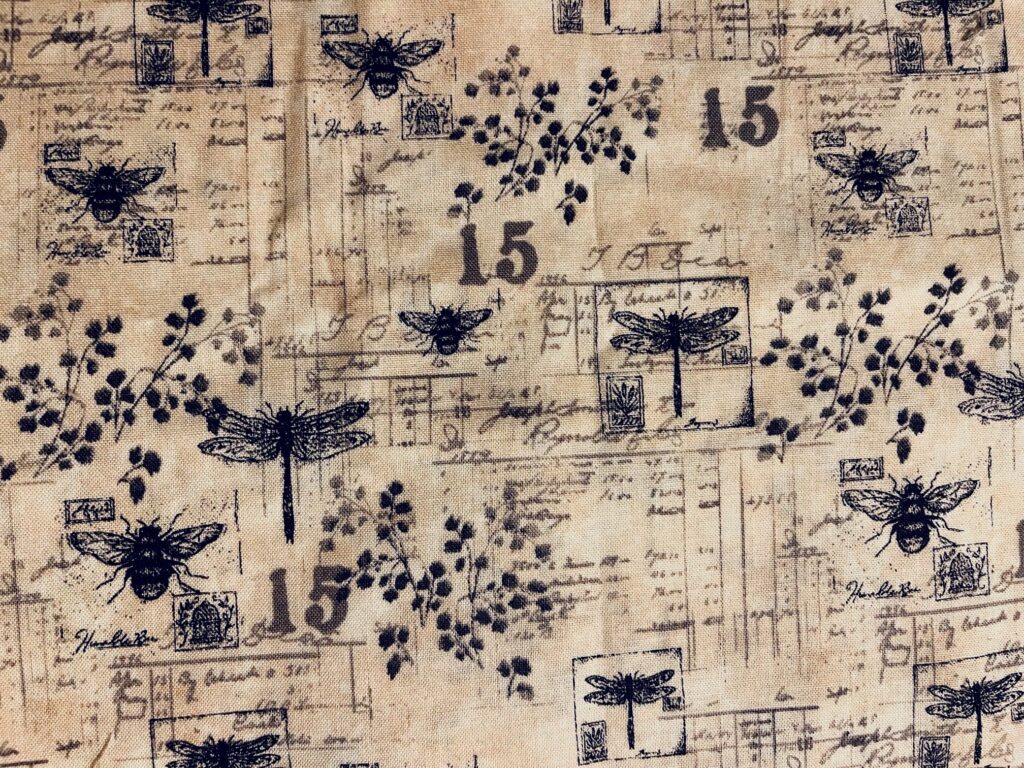
Medium Gray and Light Gray Solid Fabric:
The total fabric needed is about 1/4 yard of each.
Binding Strip:
The total fabric needed is ¼ yard.
Backing Fabric:
You’ll need about ½ yard to form a 16” x 39” piece, use coordinating fabric.
Batting:
You’ll need a piece of 16” x 39” thin cotton batting (like Warm & Natural) to make this quilt.
Fusible Web (like Wonder-Under): You’ll need a small 3” x 6” piece
Directions for Rotary Cutting
If you’re new to using this essential quilting tool you can check on my post on using a rotary cutter!
Gray Print Fabric:
Cut 3 – 6 ½” x 8” rectangles* and Cut 3 – 2 ½” x 7 ½” strips
White Fabric:
Cut 3 – 4 ½” x 8” rectangles*
*Sew 1 large gray rectangle to 1 white rectangle along the 8” side to make an 8” x 10 ½” rectangle, press seam toward gray side. Repeat for all 3. Then cut 3 triangles from Template A, following layout directions on the bottom of the template.
Peach Fabric:
Cut 1 – 3” x 6” rectangle**
Fusible Web:
Cut 1 – 3” x 6” rectangle**
**Iron fusible web to the back side of the peach rectangle, paper side facing up. When cooled, carefully peel off paper backing. Then use a scissors to cut 3 oval noses from Template D.

Light Gray Solid Fabric:
Cut 3 triangles from Template B and Cut 3 triangles from Template C
Medium Gray Solid Fabric:
Cut 4 – 5 ½” x 15” rectangles

Cream Fabric:
Cut 2 – 2 ½” x 16” strips and Cut 2 – 1 ½” x 42” strips and Cut 2 – 1” x 42” strips (if using fat quarters the 1 ½” and the 1” strips can be shorter in length, you’ll may just need cut more).

Binding:
Either Cut 3 – 2 ½” x 44” strips or Cut 6 – 2 ½” x 22” strips.
Backing:
Cut a 16” x 39” rectangle
Batting:
Cut a 16” x 39” rectangle
Templates
Sew the Blocks of the Birch Gnomes Table Runner Quilt
You’ll need to sew three gnome blocks and two birch tree blocks to make this cute table runner quilt!
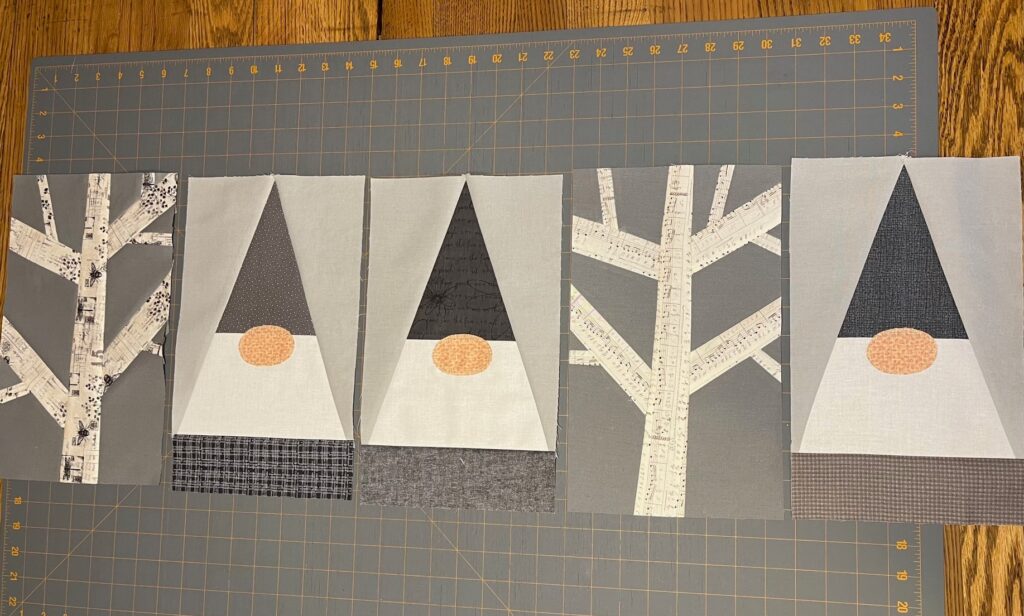
Gnome Block
Sew a light gray triangle from Template B to the left side of the gray/white gnome triangle. Press seam toward light gray triangle. Sew a light gray triangle from Template C to the right side of the gray/white gnome unit. Press seam toward light gray triangle. This unit should now measure 7 ½” x 10 ½”, trim if needed.
Place the peach oval nose cut from Template D on the face of the gnome. I like the nose to be mostly on the white with a little sticking above onto the gray hat. Press to set nose in place via directions for the fusible web.
Carefully stitch ⅛” or so around the edge of the nose, 2-3 times around. Use a wider length of stitch than normally used. It’s ok if the stitching overlaps and looks a little messy, that adds to the charm of this gnome block and makes each one unique! Who knew applique was so simple?!?!
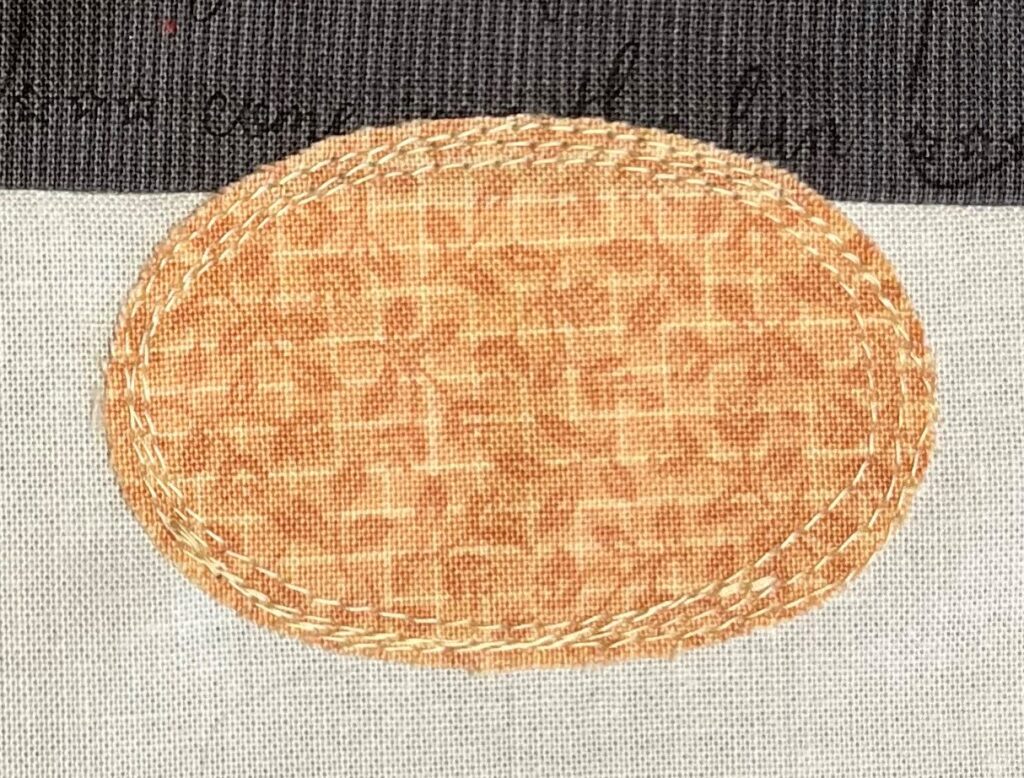
Sew the gray print 2 ½” x 7 ½” strip to the bottom of the white gnome beard. Don’t press this strip yet, you’ll do it later when you lay out the blocks for the quilt.
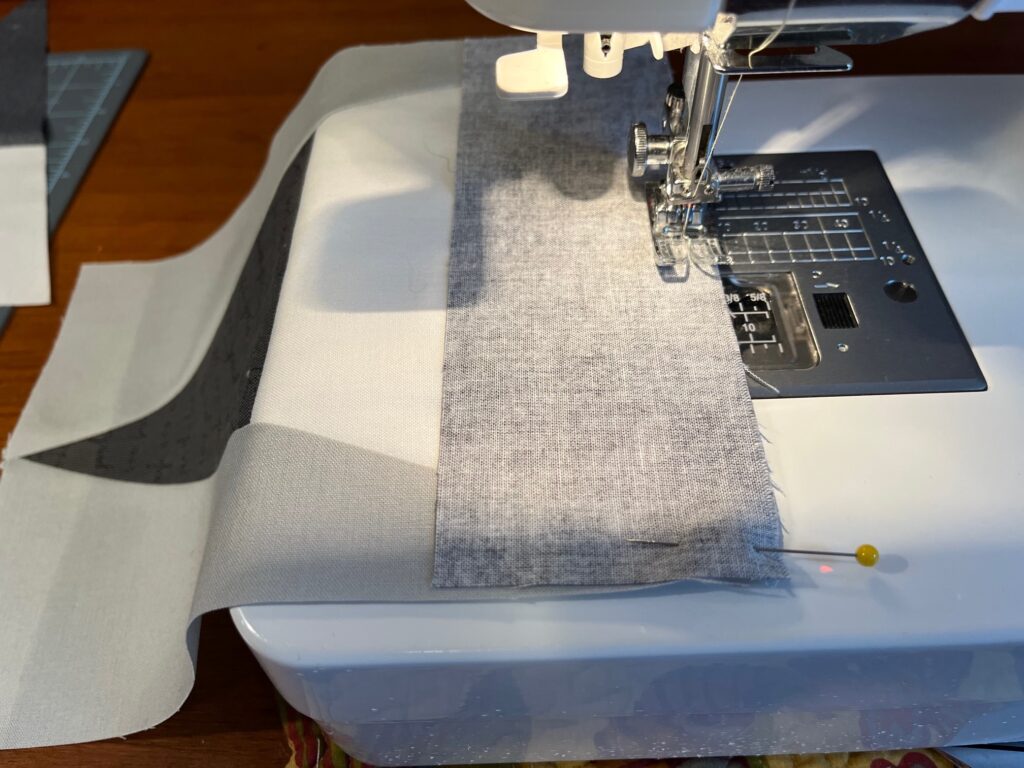
Unfinished block should measure 7 ½” x 12 ½”, trim if needed. Repeat for all 3 gnome blocks.
Birch Tree Block
Lay two 5 ½” x 15” medium gray rectangles vertical on your cutting mat, about 2” apart from each other. Use your ruler and rotary cutter to cut apart these rectangles in the places you want the branches to be. Here is an example of how you could cut these lines to represent the branches.

You don’t need to follow this exactly, nor do you need to make the branches of your birch blocks look alike. Trees all look different, you birch tree branches can also!
Sew in the Narrow Branches
Use the 1” strip of cream fabric to sew in the narrow branches. Start with one branch at a time rather than sewing in all the branches at once.
Select a branch to start with. Sew the strip between the cut sections for where the narrow branch will go. After you sew the two gray pieces of cut fabric to the cream strip, trim the both ends of the cream strip to be close to the angle of the gray pieces. You don’t need to be exact when trimming, just eyeball it. You’ll trim it again later! Press seams toward gray background.
Repeat until you have all of the narrow branches sewn in for both rectangles.
Use your ruler and rotary cutter to trim the sides of the branch units that will connect with the wider branch. Trim at the same angle of the gray pieces, just enough so the unit doesn’t have any cream overhang and is nice and straight. You don’t need to trim the outside edges of the unit right now.

Sew in the Wider Branches
Next you’ll sew in the wider branches! Use the 1 ½” strip of cream fabric to sew in the wider branches. Follow the same directions as when you sewed in the narrow branches, only now you’ll be working with gray pieces that have a narrow branch sewn into them.
Press the seams toward the wider cream branch this time! Repeat until you have all the wider branches sewn in for both rectangles.

Sew in the Tree Trunk
Use your rotary cutter to slightly trim along the edge of each rectangle where the tree trunk will be sewn in (picture 1). Use your rotary cutter to slightly trim along the edge of each rectangle where the tree trunk will be sewn in (picture 1). Trim inside of rectangles at a straight 90° angle. Trim one side of the trunk strip at a slight slant so that the top of the strip is about 1″ narrower than the bottom.
Sew the 2 ½” x 16” cream strip to each gray unit to connect them and form the tree trunk (picture 2).

Trim the Birch Tree Block
Trim block to measure 7 ½” x 12 ½”. To do this I use my plastic ruler and the lines on my cutting mat. Start by laying the block vertical and trimming the right side of the block (picture 3).
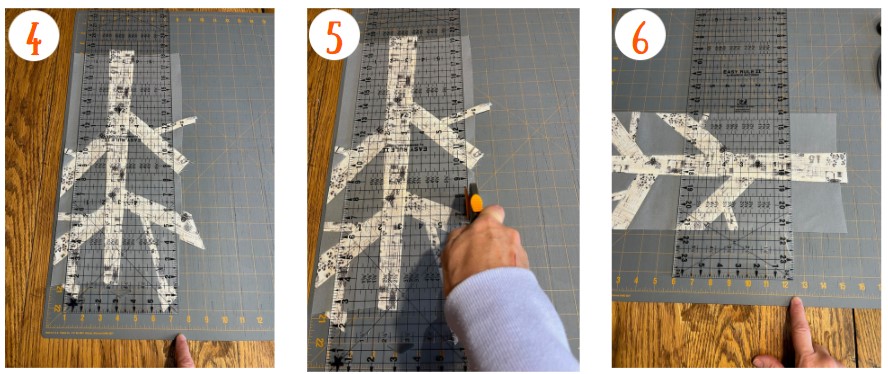
Now turn the block around and line up the trimmed edge with the first vertical (zero) line on the cutting mat. Find the 7 ½” line on the cutting mat (picture 4).
Line up the horizontal lines on your plastic ruler to the lines on the cutting mat so the ruler is square, and trim the overhang so that your block measures 7 ½” wide (picture 5).
Lay the block horizontal along a horizontal line on the cutting mat. Make sure the complete top short side of the block extends beyond the left edge of the cutting mat so you can’t see any of the first line on the cutting mat. Locate the 12 ½” vertical line on the cutting mat and trim the short bottom side of the block (picture 6). You can decide if you want more branches or more trunk by adjusting the block to the left or to the right before you cut it!

Turn the block around and line up the trimmed end to the first vertical (zero) line on the cutting mat and again locate the 12 ½” vertical line on the cutting mat (picture 7). Line up your plastic ruler along this line. Make sure the horizontal lines on the plastic ruler also align with the long trimmed edge of your block.
Trim the top short side of the block so that it now measures 7 ½” x 12 ½” (picture 8).
Isn’t this block adorable?!

Repeat all of these steps to create the other birch tree block!
Assembling the Quilt Top
Arrange the tree and gnome blocks until you get the look you want!
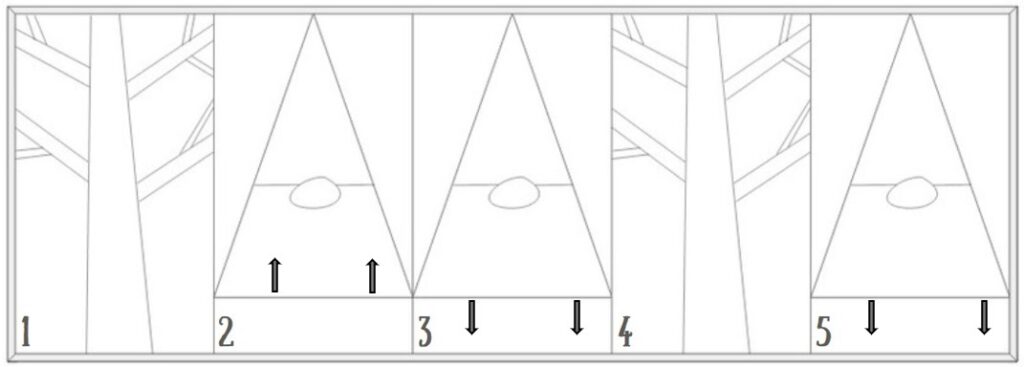
Now press the bottom row seams of the gnome blocks. Be careful to just “press” and NOT “iron” the seams in a back-and-forth motion, or your quilt blocks will stretch out of shape.
Press the bottom row seam of blocks 3 and 5 downward toward gray body (see arrows). Press the bottom row seam of block 2 upward toward white beard (see arrows).
By using this rotating direction of pressed seams, you will have nicely nested seams and less bulk when you sew the blocks to each other. This method of pressing distributes the bulk, which will make you happy when machine quilting your project! Bulky seams can lead to bumpy quilting patterns, broken thread, and overall unevenness of your quilt top.
Now that you have the blocks arranged and pressed, sew them together!
Along long edge, pin blocks 1 and 2 right sides together. Sew these two blocks together, removing the pins as you come to them. I like to press the seams of each set of blocks as I sew them together. The seams connecting the blocks all get pressed in one direction, either towards the left or towards the right. By pressing them all in one direction it will make for a uniform and smooth quilt top.

Repeat until you have all of the blocks sewn to each other and pressed.
Layering the Top, Batting, and Back
I refer to layering the quilt as “sandwiching”. You need to sandwich the top and back with the batting in the middle. For a larger quilt, this process takes a bit more time and steps. But for this small quilt, it’s a breeze to sandwich the layers together!
Tape the Backing Down
On a table or countertop, use masking or painter’s tape to tape down the backing fabric. As you tape the back to the table, you’ll want to make sure the fabric is smooth, without wrinkles. Also, make sure the right side of the fabric is facing down!
Add the Batting
Lay the batting on top of the taped-down quilt back, and move your hands across it to smooth it all over. This will get rid of any wrinkles in the batting, and help to adhere it to the backing fabric.
Place the Quilt Top
Once you have the batting placed on top of the quilt back, center the quilt top over the two bottom layers. Right side facing up, of course! The two bottom layers of the quilt (the back and the batting) should extend about 2” all around the outside edges of the quilt top.
Move your hands across the quilt top to smooth it all over, and help remove any wrinkles. This will also help adhere the quilt top to the batting a little bit.
Baste the Layers of the Birch Gnomes Table Runner Quilt
Once you have the top of the birch gnomes table runner quilt all smoothed out, use large safety pins to baste all three layers together. I like to use 1 ½” stainless pins, and I keep them all in a cute old canning jar that was my grandma’s.
Put a pin in each corner of the quilt sandwich and around the entire quilt every 4-5 inches so the three layers don’t move around when you’re machine quilting this project. You really don’t want to use more pins than this or you’ll be needing to stop a lot when you’re quilting to remove pins, which upsets the mojo of your quilting rhythm, lol!

Quilting the Layers of the Birch Gnomes Table Runner Quilt
I used a cute swirly cinnamon bun pattern to machine quilt my layers together. I avoided quilting over the noses!
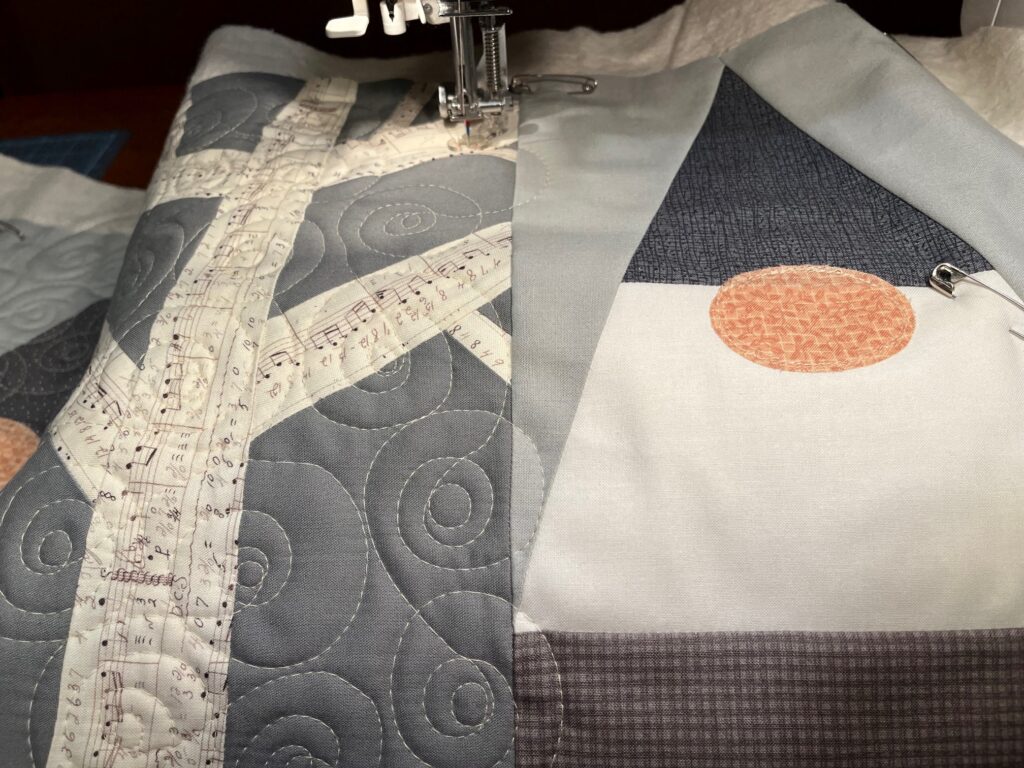
Use whatever free-motion stitch you’d like. You’ll need a darning foot to free-motion quilt, and you’ll need to either be able to lower the feed dogs on the machine or place a special cover over them. If you’re using a straight stitch to machine quilt you’ll need a walking foot.
As an alternative, you can hand-quilt these layers together too.
Have You Ever Wondered How to Bind a Quilt?
When you’ve finished quilting the layers together, it’s time to bind the edges of your quilt! Follow this easy set of directions to answer your question of how to accomplish this task!
Prepare the Binding
Fold each of the cut binding strips in half end to end. Use the 45° line on your plastic ruler to trim the ends at a 45° angle.
When you open the strips the angles on the ends will be facing in opposite directions.
Place the ends of two strips perpendicular, right sides together, and sew ¼” seam.
Repeat to join all strips into one long binding strip. Press seams open, then press long strip in half lengthwise, right sides facing out.
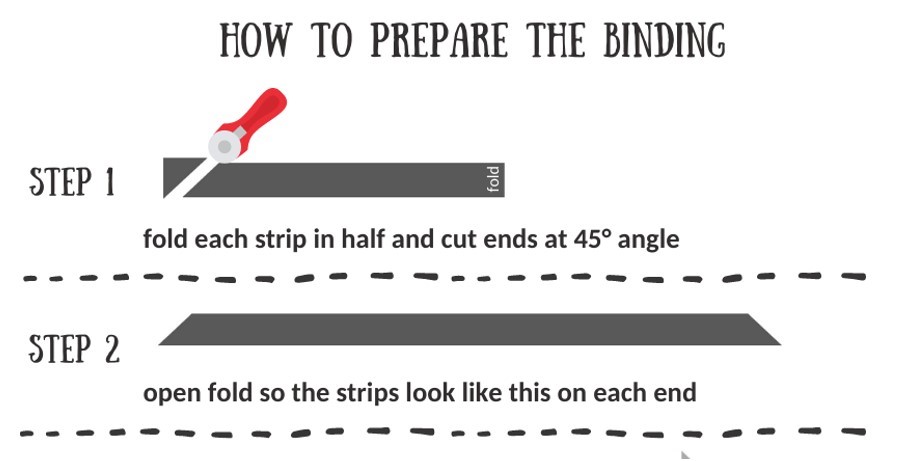

Sew the Binding Strip to the Quilt
Begin to sew the raw edge of the binding to the quilt by pinning it along one side. Be careful to sew the raw edge of the binding strip to the quilt, not the folded edge!
I usually start sewing the binding strip in the middle of the quilt side that I’m starting with. Start sewing about 8” in from the end of the binding strip, leaving a hanging “tail” on the binding. You’ll sew this to the other end of the binding strip when you finish sewing all along the sides of the quilt.
Stop sewing on the first side ¼” from the corner, use a pin to mark this location and sew right up to it. Backstitch a bit, and cut your thread but DON’T cut the binding strip.
Making the Mitered Corner
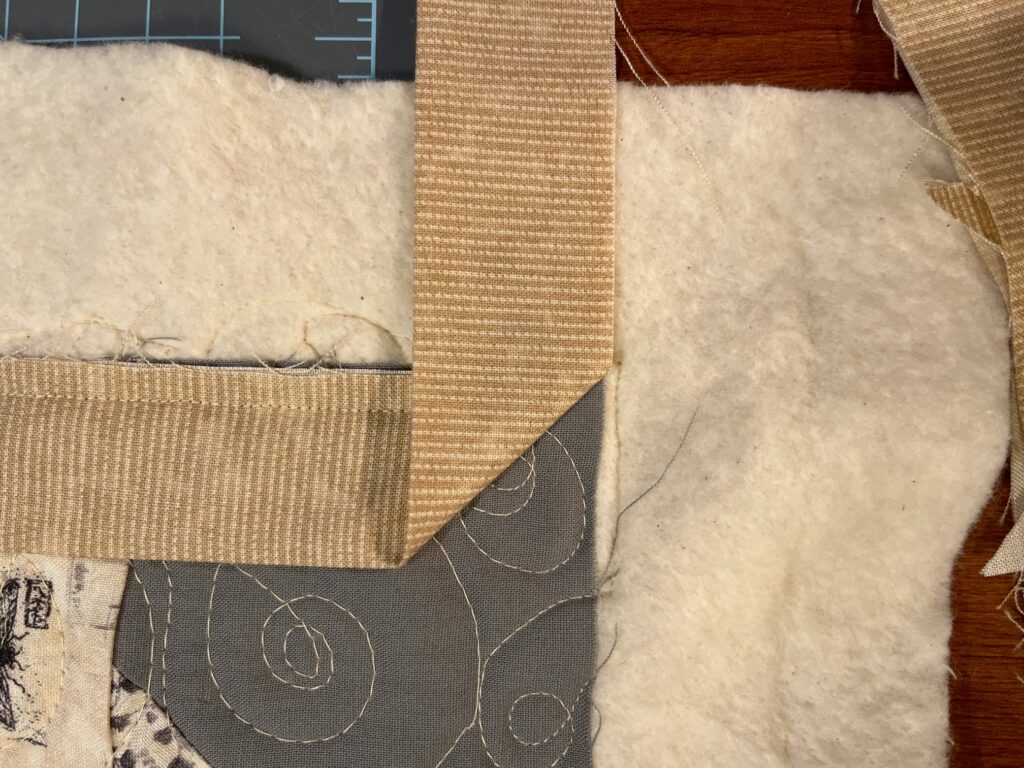
Now, remove the quilt and binding strip from your machine and fold the binding strip straight up so it’s perpendicular from the side you were just sewing on.

Fold the binding strip back down on itself and match it to the edge of the quilt you just sewed it to, and the next edge of the quilt you’re about to sew it to. Pin this fold in place, and pin the binding strip to this edge of the quilt and continue to sew it, again stopping ¼” from the next corner and repeating the folding process described above.
Continue in this manner until you are on the last side of the quilt, the side you started on.
Connecting the Ends of the Binding
Stop stitching about 14” – 16” from where you started. Backstitch and cut the thread (but not the binding strip, not yet!), remove the quilt and binding strip from the machine.
You now have two “tails” of the binding strip, tail #1 from where you started stitching it to the quilt and tail #2 from where you ended. You’ll need to join these tails together so that you have a continuous binding strip to finish sewing down to the quilt. Follow the steps below to join the tails!
STEP 1
Lay tail #1 of the binding strip along the unsewn edge of the quilt. Trim it at a 90° angle about half way between this unsewn edge.

STEP 2
Lay tail #2 of the binding strip over tail #1 along the unsewn edge of the quilt. Measure 2 ½” beyond the trimmed straight edge of tail #1. Mark this 2 ½” measurement with a pin or pencil, and trim the tail #2 at a 90° angle also. The two trimmed binding strip tails should overlap by 2 ½”.
STEP 3
Unfold the two tails so they lay flat. Pin the two tails together perpendicular to each other (right sides together). Use a fine pencil to draw a diagonal line from the corner of tail #2 to the opposite side, as shown here.
Sew along the drawn diagonal line.
Fold binding strip in half again. The continuous binding strip should now lay flat along the unsewn edge of the quilt. Test measure it to make sure it does.

If necessary, shorten or lengthen the continuous strip before trimming it.
Then trim the outside corner ¼” from the seam and finger press the seam open. Fold it in half again and finish sewing the binding strip to the quilt.
Trim the Batting and Back
Trim the batting and quilt back to ¼” from the edge of the quilt top. I use a ruler and a rotary cutter to accomplish this task. Work carefully, so you don’t cut into your quilted project.
Hand-Stitch the Folded Binding Edge to the Quilt Back
Here is my FAVORITE part of the process, hand-stitch the folded edge of the binding strip to the back of the quilt. I like to use hand quilting thread to accomplish this task! It doesn’t tangle like regular thread does and it makes the job of hand stitching so much easier!!!
When you get to the corner, carefully turn the corner right-side out to make a nice, mitered corner. I tack a few stitches up the corner to hold it in place, and then continue stitching along all sides and corners until…VOILA! Your binding is complete!
If you’d like, you can add a label to the back of your quilt.
Have fun making your Birch Gnomes Table Runner Quilt!!!
~Bonnie

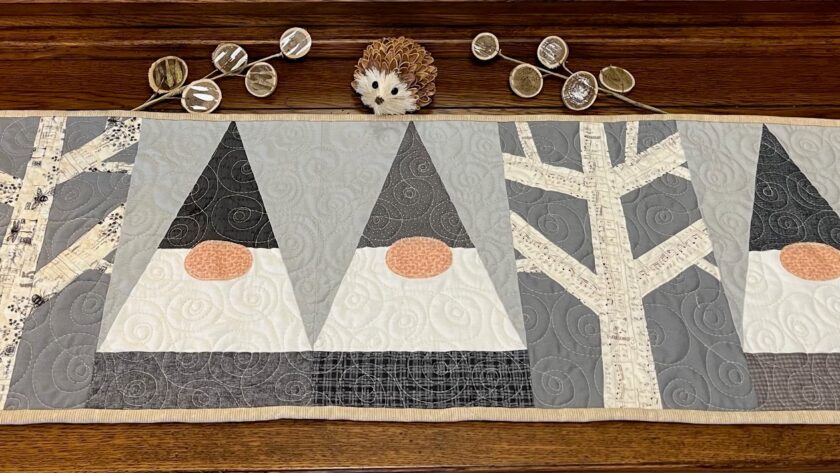


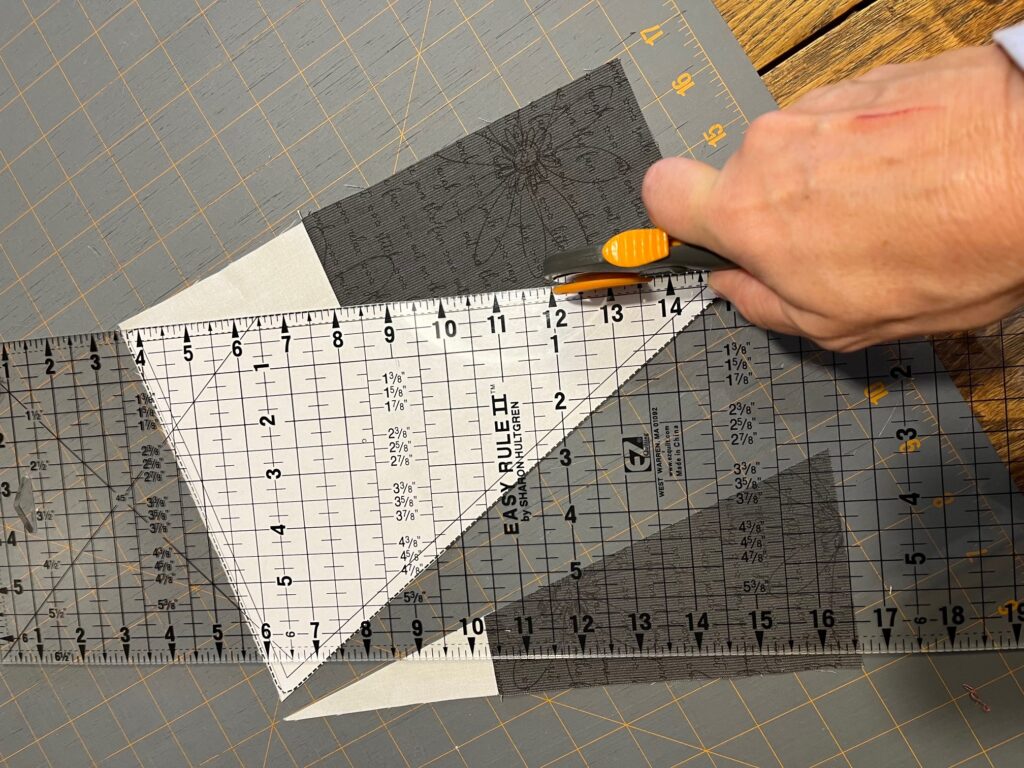

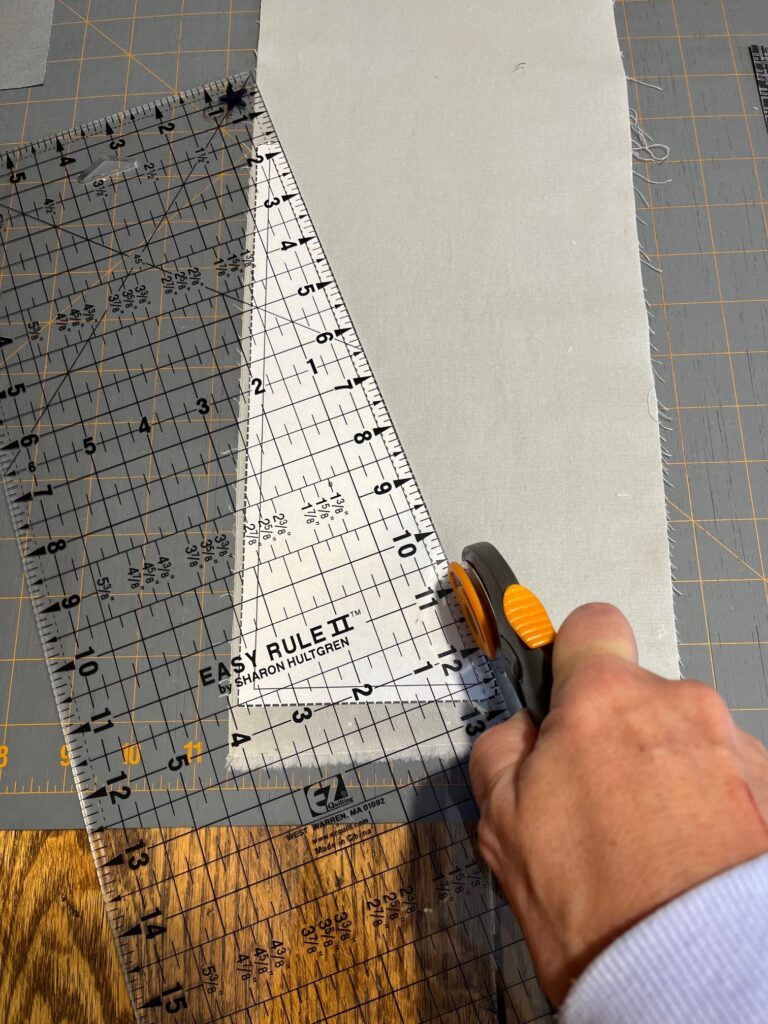



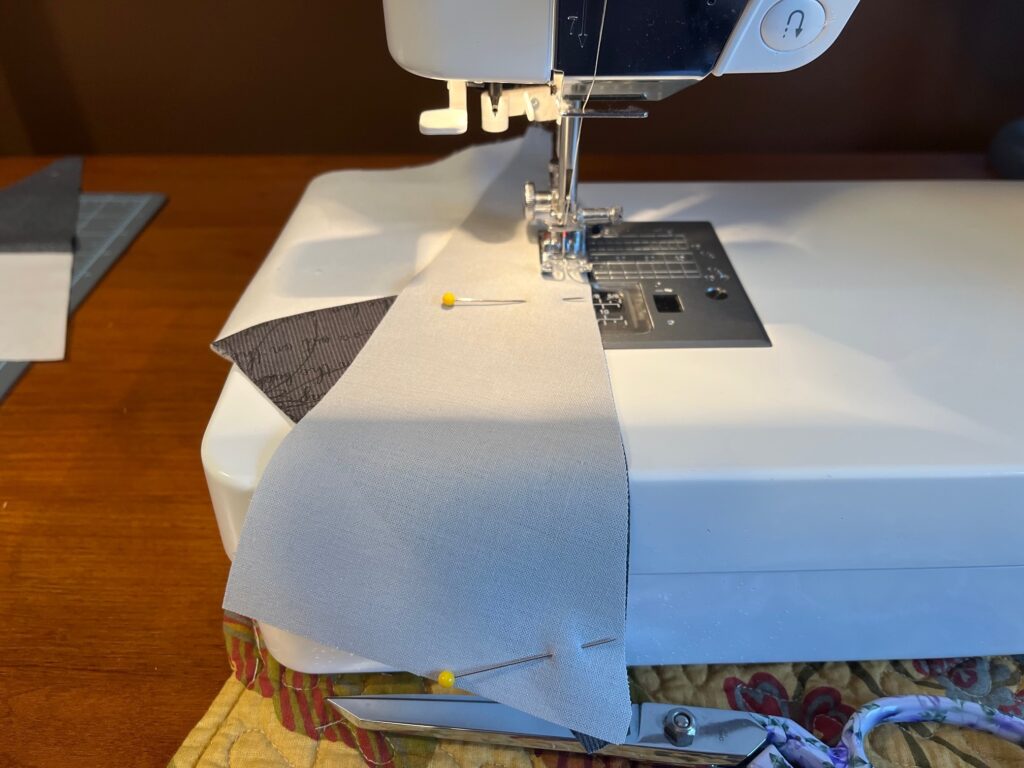


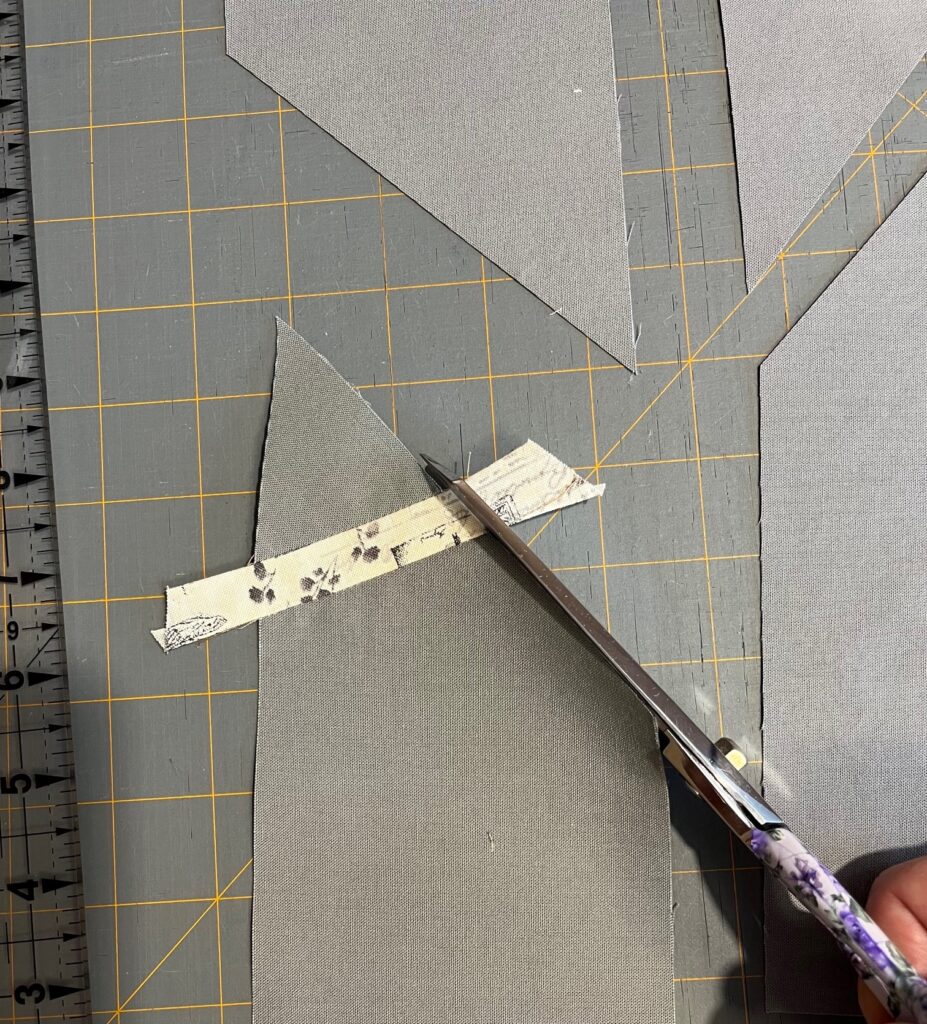





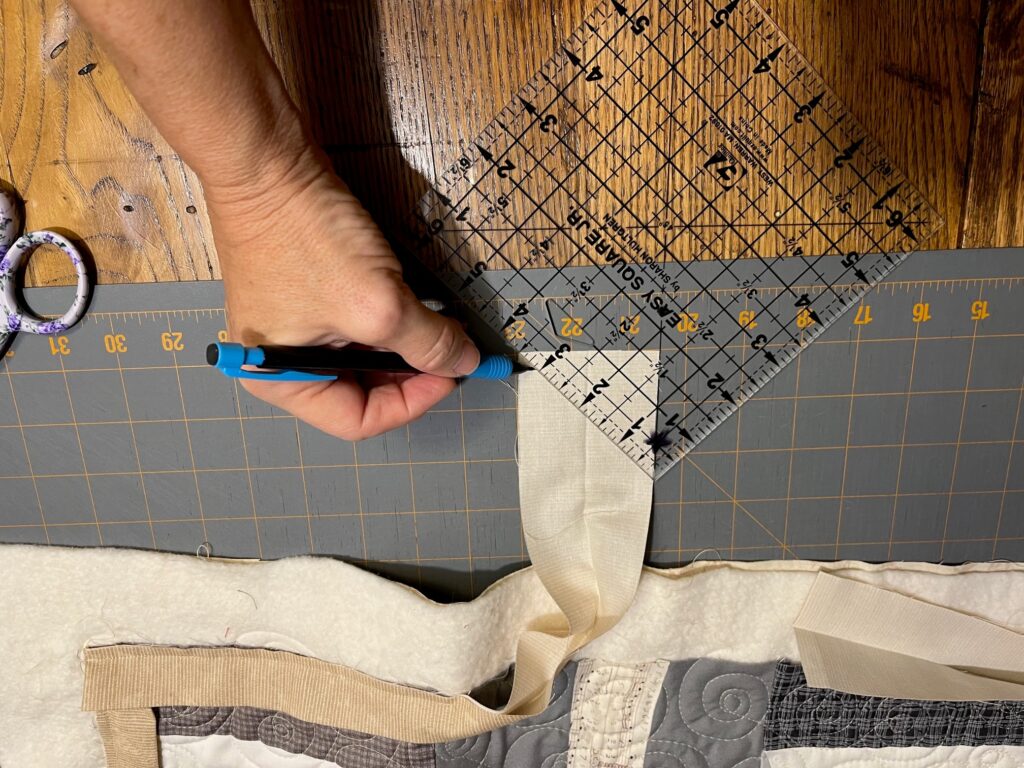
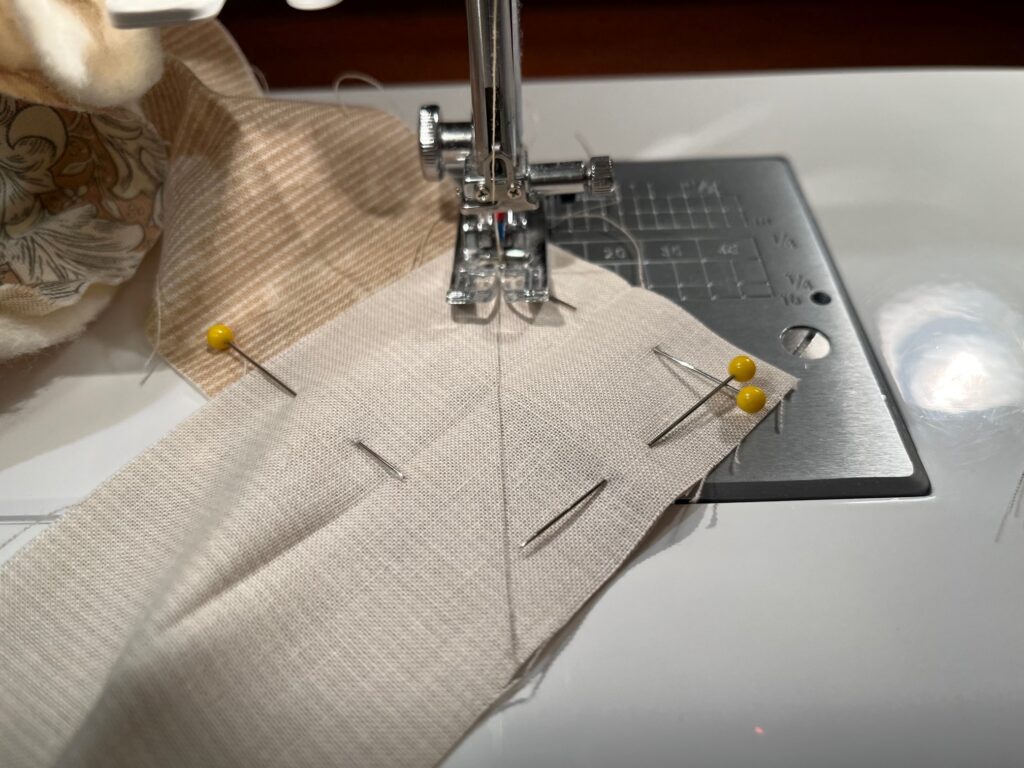
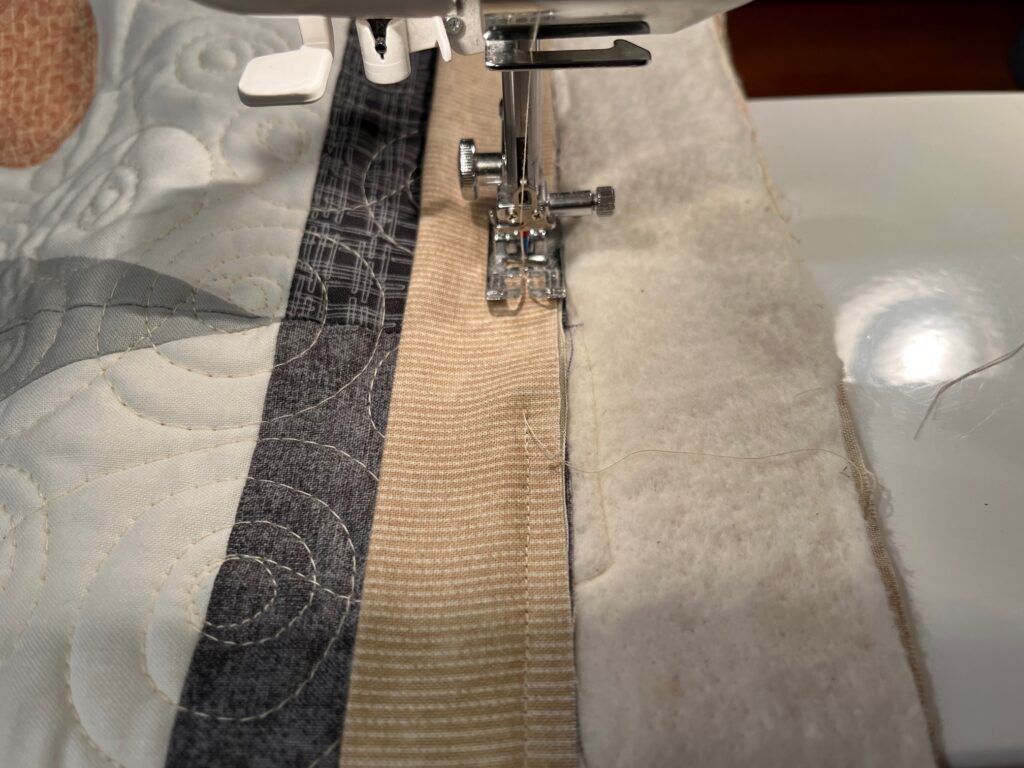




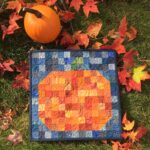

[…] Birch Gnomes Table Runner Quilt is the third quilt in my gnomes […]